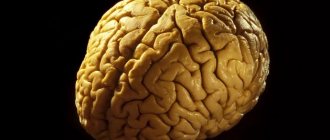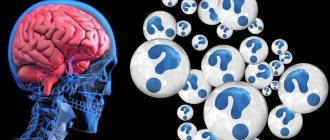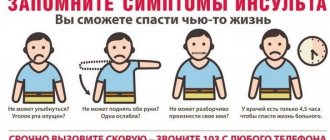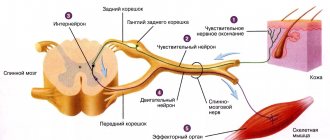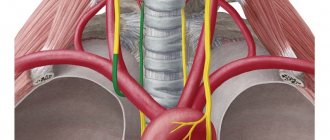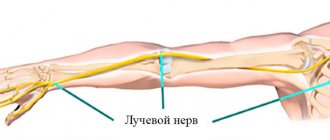Insufficient innervation of the genitals leads to a decrease in the quality of sexual life. Men face this problem no less often than women. Restoring the sensitivity of the nerve endings of the head of the penis is a necessary step in receiving qualified medical care. The action is performed by a urologist, having previously found out what the root cause of the pathology is. There may be a relationship between the disorder and the presence of diabetes mellitus or neurological disorders. Taking this into account, consultation with doctors of relevant profiles is not excluded.
How it manifests itself
Weakening the conductivity of nerve fibers leads to a disorder of sexual function, which is manifested by a wide range of symptoms. There are certain indications for restoring the sensitivity of the nerve endings of the head of the penis:
- Decreased or absent libido.
- Problems with erection, its weakening during sexual intercourse.
- Lack of ability to control ejaculation, which causes premature ejaculation.
- An additional sign is that the patient does not feel satisfied upon completion of intimacy.
The listed clinical manifestations negatively affect a man’s psychological self-awareness. If the problem is not addressed in a timely manner by competent means, the likelihood of impotence increases.
Numbness and decreased sensitivity
Numbness and decreased sensitivity are private companions of suffering in the nervous system.
Decreased sensitivity and numbness occur for a specific reason: signals from the body's sensory receptors do not reach the brain or are not perceived by it. Why this happens can be found out during a neurological examination and through instrumental studies, incl. electroneuromyography and evoked potential studies. These neurophysiological studies test the entire sensory pathway, from the body's sensory receptors to the cerebral cortex. It is important to find the cause of the sensory disorder and confidently treat a specific and understandable disorder or disease.
https://www.youtube.com/watch?v=ytcreatorsru
To restore impaired sensitivity, in addition to treating the underlying disease, we will offer you magnetic stimulation. This treatment method makes recovery faster and easier. We recommend that you contact a neurologist to determine the cause of numbness and treatment.
Swing to the right: hemihypesthesia, parahypesthesia superior and inferior, hypoesthesia of one limb
Different diseases are characterized by different sensory disturbances (types of numbness). Possible causes of numbness or decreased sensitivity:
- Brain disease is characterized by impaired sensitivity or numbness of the extremities of the opposite half of the body: numbness of the right arm or leg when the left parts of the brain suffer, numbness of the left arm (leg) - the right.
- Spinal cord disease is characterized by impaired sensitivity below the site of injury, accompanied by tissue numbness.
- Polyneuropathy is characterized by sensory disturbances of the “gloves and socks” type.
- With a disease of one or another peripheral nerve, symptoms of numbness in the area of its innervation are characteristic: a feeling of numbness of the skin (including the head: facial skin, lips, tongue, etc.), numbness of the hand or fingers (fingertips, little finger, big toe), numbness of the foot.
Decreased sensitivity and numbness (as a symptom) in one or another part of the body may be associated with:
- With disruption of the conduction of nerve impulses from receptors that perceive sensations. This is possible when the receptors themselves die, the peripheral nerves, spinal cord or brain suffer;
- With the destruction of the area of the cerebral cortex that receives sensitive impulses.
More often we see a violation of all types of sensitivity at once, accompanied by partial or complete numbness of any part of the body. But only one or a few types of sensitivity may be affected. Thus, there may be a disturbance in the perception of only tactile, pain, temperature, joint-muscular sensations, sensations of pressure, movement, etc. This is typical for demyelinating diseases and polyneuropathy.
We will offer you treatment for numbness or decreased sensation based on our diagnostic findings.
Impaired sensitivity (increased or decreased sensitivity) is not an independent disease, but a manifestation of some kind of disease or imbalance in the functioning of the body. Our task is to find the cause of increased sensitivity and reduce the pain threshold to normal.
The pain threshold can be reduced throughout the body or in one part of the body and can manifest itself in different ways:
- increased pain sensitivity (small painful stimulation causes severe pain),
- abnormal or increased temperature sensitivity (for example, to hot or cold water),
- unpleasant sensation or pain when touched, increased sensitivity to air movement - increased tactile sensitivity,
- increased perception of the feeling of pressure and body weight, joint-muscular feeling.
Treatment methods
Conservative and surgical methods are used to restore the sensitivity of the nerve endings of the head of the penis:
- Medication. They are based on the elimination of uncomplicated diseases that lead to disruption of the innervation of the penis and its parts (in particular, the head).
- Psychological. The specialist relieves the consequences of stressful events, manifested in the form of psycho-emotional disorders.
- Surgical. Restoring the sensitivity of the head of the penis is carried out through minimally invasive intervention. The recovery period takes several days. Modern microsurgical operations are often performed using a laser beam.
Our clinic specialists restore the conductivity of nerve fibers in various ways. Each patient is examined using modern, precise equipment. Its results make it possible to exclude a number of pathologies and influence the actual cause of the development of the disorder. Doctors at our clinic use only safe technologies and prescribe effective treatment that can restore a man’s health.
How to restore nerves naturally
Our bodies deal with illness and injury in different ways. Sometimes they can manifest themselves in obvious ways, and other times not so much.
Human health is truly complex. We can easily detect some health problems in some people (and even ourselves) with just a glance. But it doesn't always work that way.
This is especially true for nerve health.
The biggest threat to nerve health is nerve damage and it can easily go undetected. It can also be misdiagnosed or confused with a whole bunch of other different problems.
There can also be many different types of problems that may not seem related at all, such as emotional mood disorders and pain. And if we take a deeper look, the connection exists because all the symptoms come from the nervous system, which controls the nerves.
NERVE DAMAGE: HOW DOES IT HAPPEN?
Nerves in the body are mostly invisible. So how can they be damaged, especially without noticing it?
The answer is surprising, but not surprising.
Because more often than not, nerve damage is caused by very similar types of harmful events in the body that are difficult to detect most of the time or that most people can easily overlook. Nerve damage (also called neuropathy) is also more common than people think.
The most likely causes of nerve damage include:
- Old age (natural deterioration)
- Genetics
- Blood pressure problems and other blood-related problems
- Diseases that cause chronic inflammation
- Autoimmune disorders
- Diabetes mellitus type 2
- Trauma (such as concussion)
- Kidney diseases
- Alcoholism
- Some medications
- Certain types of infections
- Lack of nutrients (especially vitamins)
These are, of course, not all possible reasons. There may be many others out there.
WHAT ARE SOME SYMPTOMS OF NERVE DAMAGE?
Perhaps more important than knowing what causes nerve damage is how to recognize it. This requires familiarity with the signs and symptoms.
These can range from very subtle issues to larger, more obvious health issues that are much harder to ignore.
Early detection to help reduce further nerve damage is key.
If something causes nerve damage in the body, it will likely continue to cause more damage once it starts, and thus create more symptoms and other health problems.
The most likely symptoms of nerve damage include:
- Difficulty coordinating or moving the body/limb
- Fewer automatic reflexes
- Less dexterity (ability to move fingers)
- Feelings of tingling, numbness and burning
- Worsening pain
- Inability to feel pain
- Muscle twitching and/or weakness
- Frequent falls or fainting
- Dizziness and/or brain fog
- Spasms and cramps
- Irregular heart rate or blood pressure
- Digestive problems (including nausea, vomiting, diarrhea)
- Reproductive problems
- Kidney problems (decreased sweating, urinary problems)
Keep in mind that these are not all possible signs of nerve damage. Having one or two of these does not mean that nerve damage is also a problem.
However, if you experience a handful of these (or all) of these symptoms, be sure to see a doctor or healthcare professional as soon as possible to investigate nerve damage or other possible causes.
RESEARCH SHOWS PLANT FOODS CAN HELP
For a problem that can cause so many symptoms, the truth may come as a shock to some: There aren't many ways to help cure, reverse, reduce the risk of, or support nerve pain or neuropathy.
In fact, most doctors will recommend over-the-counter pain medications, but nothing more (besides the typical recommendations for lifestyle changes that help the conditions causing these symptoms). In other cases, pharmaceutical drugs may be prescribed, but with the risk of side effects.
Are there natural options that can improve support and basic nerve health?
If you were to ask a traditional healer or herbalist, their answer would be yes; while some scientific researchers will likely say yes too. Below are some of the most studied natural herbs and mushrooms that are known to support nerve health and thus may help heal nerve damage.
Maca peruviana
There may not be another plant with so much research. Contains a powerful natural supplement that helps heal nerve damage.
This is true of the healing powers of Maca for a variety of reasons.
For example, a 2013 study called Peruvian maca “neurotrophic.” Neurotrophic means that it stimulates the regrowth and repair of new nerves and neurons, which is obviously of great importance for those dealing with nerve damage.
Because of this single quality, Maca Peruvian also helps heal nerve damage associated with all sorts of other problems that may be caused or associated with it.
For example, research shows the positive effects of Peruvian maca on issues such as cognitive problems, memory problems, concentration, stress and anxiety, as well as helping with more serious conditions involving nerve damage such as neurological diseases, depression and even stroke.
Research like this means that for those considering natural support for nerve damage, Maca should definitely not be overlooked. More details
Pine Pollen
It is not a very well known herb in the Western world. However, in the Eastern world, and especially in Asia (especially in Ayurvedic healing practices), the herb has flourished as a healer for many things.
In particular, she cured many nervous diseases.
Numbering among these illnesses are: low energy, depression, stress, anxiety and more .
What's more, a 2013 review found that pine pollen—used to treat extreme nerve conditions in Ayurveda—may actually lead to benefits from the underlying neurological disease of nerve damage, Parkinson's disease. According to another review of research, this may be because pine pollen contains high levels of an amino acid called L-DOPA (short for L-3, 4-dihydroxyphenylalanine).
This amino acid acts as a neurotransmitter that repairs nerves and the nervous system in general, and perhaps not just against Parkinson's disease (depression is also a likely candidate). There is increasing evidence to suggest that this is a natural support for nerve damage. More details
Grape seeds
Never underestimate the power of a grape seed.
But this eternal knowledge is filled with more meaning than we understand.
Grape seed is known to be rich in powerful cancer-fighting antioxidants and has many other benefits as well.
Yet the shocking properties of this plant compound are nerves. Grape seed can be neuroprotective, neuroregenerative, and bring a world of goodness to the entire nervous system.
Research shows that this is very possible. One study found that grape seed protected nerves through its antioxidant effects. Another demonstrated amazing abilities to heal nerves after spinal cord injury. More details
OTHER WAYS TO REDUCE THE RISK OF NERVE DAMAGE
In the meantime, in addition to these natural options, here are some other tips that can help reduce the risk of nerve damage.
- Monitoring blood glucose levels (if the person has diabetes)
- Be careful while exercising
- Eat a healthy and varied diet
- Avoid traumatic injuries and wounds to the nerves and nervous system
- Monitor chronic inflammation
- Take plenty of antioxidants
- Follow your doctor's advice if you have a serious health condition.
- Quit smoking
- Avoid alcohol
- Get plenty of quality sleep
WHAT CONDITIONS ARE INVOLVED IN NERVE DAMAGE?
Most likely, nerve damage (or the risk of nerve damage) is associated with a more serious health disorder, condition, or disease. Even though it may seem that it may be due to nerve damage, this does not mean that it should be underestimated.
If a person has any of the following conditions, they may be at higher risk of nerve damage. In these cases, in addition to lifestyle changes and using natural remedies, be sure to discuss your options with your doctor or monitor for symptoms of nerve damage if one is present.
- Type 2 diabetes
- Autoimmune diseases (such as rheumatoid arthritis and multiple sclerosis)
- Fibromyalgia
- Thyroid diseases
- Kidney disease
- Liver disease
- Alcoholism
- Parkinson's disease
- Cancer
- HIV
- Digestive disorders
- Cardiovascular disease and stroke
Share and ask your friends for their opinion!:
Causes of nerve damage
Nerve damage can occur for a variety of reasons, including car and motorcycle accidents, sports injuries, falls from heights such as those in construction, and surgery to remove head and neck cancer. Once the nerve is severed from the muscle, it must be repaired no later than 18 months before irreversible muscle atrophy develops. But the independent growth of nerves is very slow - 1 mm per day and does not allow reaching the damaged muscle in a timely manner. In such cases, transplantation saves.
Just as railroad switches reroute trains, surgeons redirect peripheral nerves in paralyzed arms and connect healthy nerves to diseased ones. Essentially, the new network of nerves restores communication between the brain and muscles again, allowing patients to perform certain activities on their own, such as eating or writing with a pen.
Folk remedies
Despite the proven effectiveness of folk remedies used to treat brachial neuritis, getting rid of the disease with their help should only be done after consultation with a neurologist.
Compress with turpentine
To prepare the compress you will need:
- turpentine ointment – 20 g;
- olive oil – 10 ml;
- a piece of gauze or fabric made of natural material - the size is determined by the area in which pain occurs.
You need to make a compress with turpentine like this:
- Place the used gauze or cloth in several layers.
- In a separate container, mix turpentine ointment and olive oil until a thick mass of uniform consistency is formed.
- Place the oil mixture on a cloth, then apply the compress to the injured area, fixing it on it.
- Leave the compress on for 20 minutes, then remove excess turpentine from the skin.
- This warming compress should be done 2 times a day, no more than 4-5 days. With its help, it will be possible to get rid of acute pain, as well as partially restore the sensitivity of the skin in the injured area of the body.
Compress with valerian
For a compress with valerian you will need:
- alcohol tincture of valerian roots and leaves – 50 ml;
- red pepper – 5 g;
- a piece of gauze or fabric made of natural material - the size is determined by the area in which pain occurs.
You need to make a compress with valerian like this:
- Place the used gauze or cloth in several layers.
- In a separate container, mix alcohol tincture of valerian with red pepper.
- Apply the warming composition to the cloth or gauze used, and then place it on the injured area of the shoulder girdle.
- After leaving the compress for 10 minutes, remove excess composition from human skin.
- It is optimal to make such a compress once a day. With its help, it will be possible to reduce pain, increase the mobility of the limbs, and also restore sensitivity to the skin.
Chamomile decoction
Chamomile decoction is recommended to be taken orally 2-3 times a day until the pain syndrome completely disappears. This can reduce inflammation, while relieving the pain of neuritis.
To prepare this product you will need:
- 5 tbsp. l. dried chamomile flowers;
- 200 ml of boiling water.
The algorithm for preparing the decoction looks like this:
- Pour chamomile into a mug, then pour boiling water over it.
- The optimal infusion time for the decoction is 15 minutes.
- You need to take chamomile remedy 4-5 times a day, 20-30 ml.
Yarrow infusion
Yarrow infusion is also effective in reducing inflammation in brachial neuritis, as well as improving local blood circulation in the affected area of the human body.
To prepare it you will need:
- 50 g dry yarrow;
- 500 ml filtered water.
The algorithm for preparing the decoction looks like this:
- Pour the dry herb into a small saucepan, fill it with filtered water, then cover the container with a lid and bring to a boil.
- Reduce heat, then continue to simmer the broth for another 15 minutes.
- After the specified time, it is recommended to drain the broth, separating the liquid from the herb.
- It is recommended to take yarrow 3-5 times a day, 50-100 ml.
Where are nerve transplant operations performed?
Specialists from the company “ Treatment Abroad ” found out which clinics in Europe carry out such operations. Surgeons from the Genolier Clinic, Nyon, Switzerland, successfully carry out such interventions, partially restoring lost functions and preventing the development of muscle atrophy and contractures. Well-developed microsurgical technique allows for good engraftment and a small number of complications.
If you have any questions about organizing treatment in Switzerland , contact our medical specialists and we will answer all your questions!
Did you like the article? Share:
Negative factors in the regeneration process
Everyone knows the expression: “Don’t be nervous! Nerve cells are not restored!” The first part of this statement is completely correct. The fact is that the regeneration process can be either accelerated or slowed down. Stress is one of the main factors due to which the process of nerve cell recovery proceeds more slowly. Under its influence, neurons die. This has a destructive effect on the brain, as well as the entire human body. If neurons die faster than new ones appear, this will lead to the development of a number of pathologies of the nervous system. Therefore, the scientists who advised not to be nervous were completely right.
In addition to stress, insomnia, radiation, chronic lack of sleep, alcohol, nicotine and narcotic substances have a destructive effect on neurons. There are many negative factors. The process of cell restoration in the nervous system is called neurogenesis. It contributes to the proper functioning of the entire human body. If nerve cells die in large numbers, this process should be stopped immediately. Over time, new neurons will appear. The patient's condition will improve.
Risk factors
Brachial neuritis (symptoms and treatment must be carefully explained and described by the doctor to the patient) is most likely to occur in a number of cases:
- with frequent and severe hypothermia of the upper part of the human body (shoulder girdle, thoracic spine, and so on);
Loaders are most susceptible to brachial neuritis
- with frequent viral or bacterial infections of the body (especially when they occur frequently, not allowing the immune system to recover);
- in case of a serious injury (hematomas or bruises do not necessarily have to appear on the surface of the skin);
- with dislocation of the shoulder joint;
- in case of a bone fracture or ligament rupture (the injury can only be identified after an X-ray examination);
- in the presence of a benign or malignant tumor in the armpit or neck;
- systematic or acute intoxication of the body;
- frequent use of crutches (especially important if you are overweight);
- local hemorrhage (this risk factor is most common in infants).
Diagnostics
Neurologists diagnose shoulder neuritis in patients according to the generally accepted algorithm:
- Clarify the complaints of a particular person, as well as record information about his initial state of health, physical indicators, and lifestyle.
- Examine the patient (during this stage, the doctor feels the injured area, determines the degree of pain by palpation, and also visually assesses the condition of the skin and the presence of swelling of the soft tissues), and then formulate a final history.
- Conduct functional tests. The most indicative of them is a test that requires the patient to turn his back to the doctor, then turn his hands to the ceiling, and then move his thumbs to the side. The neurologist can also check the motor activity of the limb by asking the patient to bring the backs of his hands together and then move his fingers as far apart as possible.
- If there is insufficient information, conduct an ultrasound, ENMG, MRI, CT or x-ray examination of the shoulder girdle area.
Complications
Brachial neuritis, like other diseases, can lead to complications if not treated in a timely manner.
The most dangerous among them are:
- atrophy of muscle tissue (complete or partial);
- minimizing motor activity of the upper limbs;
- complete paralysis;
- mental disorders (arising against the background of obvious physical limitations and constant pain experienced by a person).
Treatment of neuritis affecting the brachial nerves, provided it is timely, allows the patient to return to normal life after 2-3 weeks. Prolonged ignoring of the symptoms of a progressive inflammatory process in the nerve groups of the shoulder girdle is fraught with complete loss of motor activity of one or both upper limbs.
Understanding the peculiarities of the course of the disease, as well as knowing the basic techniques for checking his condition, a person will be able to determine the presence of dysfunction in time, which will allow him to begin treatment as soon as possible, without allowing complications to develop.
Features of the nervous system
For many years, scientists have been trying to get an answer to the question of why nerve cells do not recover. Therefore, work in this direction was carried out constantly. Over time, it became clear that the hypothesis was wrong. Nerve cells perform a number of important functions. The main ones are the following:
- An association. All organs and systems of the human body function as a single whole. This relationship is ensured by the correct functioning of the nervous system.
- Processing information. It comes through external and internal receptors.
- Transfer of information. After data processing, it is transferred to the appropriate cells, organs and tissues.
- Development. As environmental conditions become more complex, the nervous system also improves and becomes more complex.
Such a complex mechanism cannot but regenerate. Therefore, the answer to the question of whether nerve cells are restored in humans was found in 1998. Data from the study of E. Gouldy and C. Gross became a new stage in the development of medicine and psychology. They were published in 1999.
The experiments were carried out on mature monkeys. It has been proven that the primate brain produces new neurons every day. This process continues continuously until death. In 2014, it was accepted that the human brain develops not only in childhood and adolescence, but throughout life. The main factor in development is emotions.


